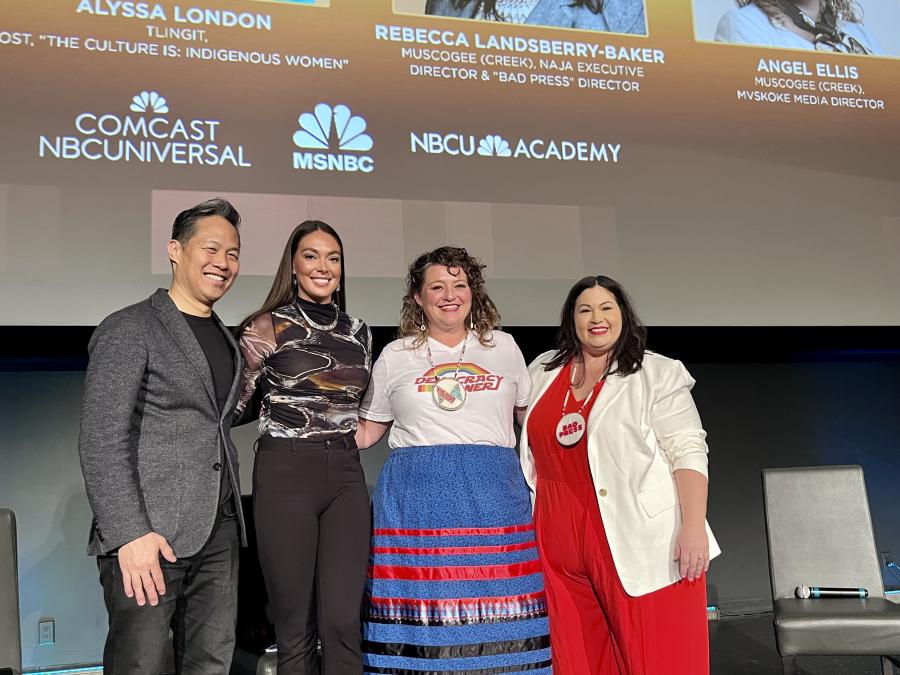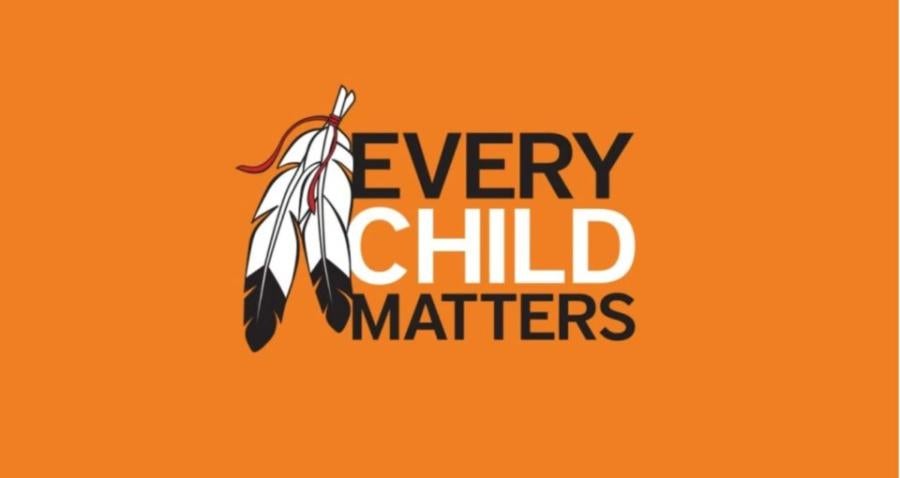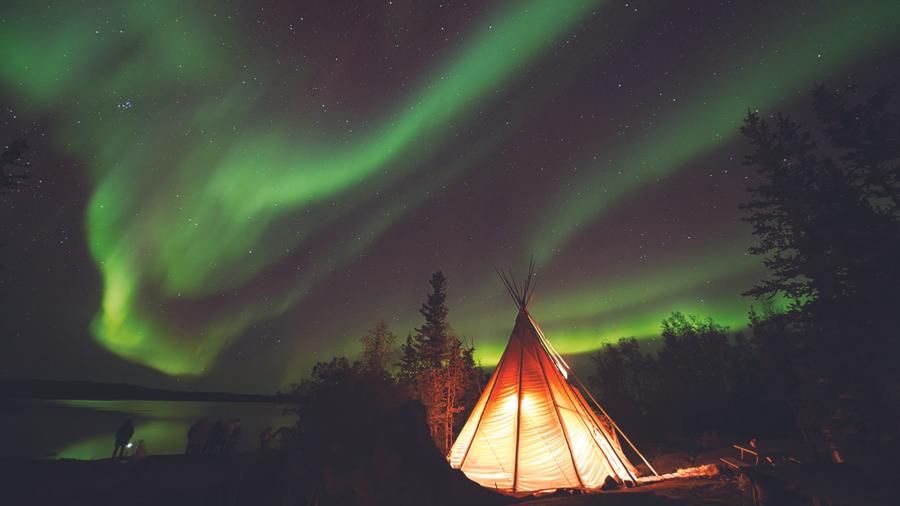On July 11, 1990, an armed conflict was sparked was sparked when police assaulted a Mohawk barricade erected to protect a pine forests from a golf course expansion in Kanehsatake, Quebec, which adjoins the white community of Oka. For three months, Oka was an issue talked about around the world as Canada laid siege to two Mohawk communities and mobizlied the entire Fifth Brigade - 3,400 troops - of the Canadian Armed Forces.
During and after the siege. Quebec arrested over 100 Mohawaks and their supporters, charging them with obstructing peace officers, rioting, and possession of weapons dangerous to the public peace. Most pled guilty, and any cases were dropped. But in the case of those protesters trapped at a treatment center during September 1990, no plea was entered, and nearly two years later the largest trial in Canadian history took place.
In his closing arguments to the jury, Richard Corriveau, lawyer for 33 Mohawks and supporters known as the T.C. 33, pointed out that the events of 1990 were a manifestation of deeply felt beliefs on the part of the Mohawk people and the certain things in the country would have to stop, namely the oppression of Native nations. A not-guilty verdict, he said, would demonstrate that the justice system has begun to understand.
A blanket acquittal was announced on July 3, 1992.
Our challenge was to come up with a defense strategy that was consistent with our position and consistent with the stand we took it the pines. There was immense pressure from the media and various levels of government to have as many conviction in this case as possible, I think I can speak for everyone accused in saying that we've been through another type of conflict just as intense and not too different from the pressure of the summer of 1990 and standing in the pines. The court proceedings were a different kind of battle, but it was a battle just the same. There was no intent to settle the land-claims issue in our trial. We were being processed through a criminal justice system, totally disregarding the political nature of this case despite the international implications.
Early in the fall of 1991, I read an interview with Leonard Peltier. He's currently serving two life sentences for the deaths of two FBI agents that come of the armed standoff in Pine Ridge, south Dakota, in 1972. When asked about our trials and how we should proceed, he said: "They shouldn't expect justice, but they should go in with he attitude that they're going to fight. Stand as proud people. Stand on your treaties. Stand on your own traditions and culture and government philosophies. And use the laws against them."
That's how we modeled our fight in court. We knew what the Lakota went through to try and protect the Black Hills in South Dakota from the oil, gas, and uranium multinationls. They cited their broken treaties. They were hit by force, by massive military, money, and media manipulation. And like them, we were sure to lose against all that. But in keeping with Leonard's advice, we used the court to bring forth the sovereignty issue, the nationhood of the Mohawk traditional people, our history of being under attack - not like the history in the United States, but a more sophisticated, apartheid-like denial of our land rights, government, language, culture, and pride Genocide.
In the beginning of the trial process, there was a lot of political interference, and we were led to believe that we would be taken care of by Mohawk Nation Office of Kahnawake. Initially, there were estimates that our defense would cost $3 million, and, of course, there were dozens of lawyers. These lawyers were directed not to bring up sovereignty or jurisdiction questions in the cases they handled. Also, we wanted to mount a case based on the grounds that we're not Canadian citizens, that our lands are not Canadian soil. I suspect that most, if not all, lawyers are ill-equipped and unable to mount a case based on sovereignty, especially in what was being reduced by many on both sides, Canadian and Mohawk to being only a criminal trial.
When all the lawyers quit in February 1991, we accused got together to take care of ourselves. It made no sense to have all those lawyers who couldn't work together anyway so we pared it down to one and reduced the cost projections to $250,000.
We kept outside political interference out. We felt we were the only ones who could see our issues through. From the beginning, this was a traditional people's fight. It was a traditional fight in the pines, and we wanted to be consistent with that. So we explained to Corriveau that the Oka crisis was part of an ongoing historical pattern. We explained to him that we'd been attacked with the use of force in the past. Some of our traditional chiefs had been shot when the government brought in the Indian Act in 1924 in most Mohawk communities. When the Indian Act was enforced, many important articles were seized. These were articles we needed for our society to function, the way Parliament can't function without the mace or scepter. When these articles were seized, it left our councils dysfunctional. They also jailed our clan mothers for upwards of a year.
All of that, we explained, was designed to destroy our traditional councils and make it possible for the government to install Indian Act band councils through elections. This is against our tradition so the traditionalists don't vote. If in a community of 800, only 20 people actually voted, that minority made up the new council. The Oka crisis was part of this whole thing. It was another example of the attack against traditional people.
NOT GUILTY
We tried to illustrate to the jury that this was a traditional fight partly through our oral history. We had to tell them how we view ourselves in the universe - how the trees, the grass, the winged things, the four-legged beings are equal to us. We're not masters on this realm. We coupled this with evidence of our efforts to negotiate. We showed how we saw the pines as sacred to our people. In juxtaposition to that, we showed how Oka's plans for expanding the golf course treated them only as "good market value." They never expected resistance to expanding their golf course.
As part of the prosecution's evidence, the army introduced maps that were inaccurate. I don't know if it was deliberate or just a mistake, but several of our people noted that on their maps the golf club house was behind the police barricades. In fact, it was up in the pines beside us. The maps showed the parking lot expansion as going east, but there was no other way that it could expand except by going west - over our graveyard. That really got to people, the fact that our ancestors had to be dug up and moved for the parking lot. And at their own request, the jury was brought to Kanehsatake. They saw the position of the army in relation to the grounds of the drug-treatment center, where we were. The jury could see how we couldn't be seen as a threat to the public.
We showed the jury how we never intended to use our weapons unless our women and children were threatened. We told the jury how in the months leading up to the crisis we had met with various groups, including the Sûreté de Quebec, Quebec's provincial police force. We were assured that they weren't there to enforce any injunction against our blockade. As evidence, we also introduced the letter from John Giacca, Minister of Indian Affairs for the Province of Quebec, written July 9, 1990, urging the mayor of Oka not to do anything rash and saying that this was a very delicate situation. We showed the jury how we tried to reach Tom Siddon, the federal Minister of Indian and Northern Affairs. We received his response in October of 1990!
What we showed was that the trouble had been brewing for a long time.
The weapons became the major issue. The Crown prosecutor tried to prove that we had illegal weapons up in the pines before the morning of the raid, but their video evidence only showed events after the shooting took place. The Crown relied heavily on broadcast videos, instead of the police videotape from that morning. Then the Crown tried to say that the people in the pines were not supported by the people in the community, but the evidence was the opposite. After the raid, people in the community came to the pines to show their support and build more barricades.
In the closing arguments, the Crown told the jury they had to find us guilty or they would send a message to the world that immigrants could come to Canada and settle their disputes with weapons. The prosecutor also told the jury that they risked encouraging anarchy and threatening their democracy, but the judge told the jury that "that was an unacceptable statement, amounting to nothing less than intimidation." Moreover, the Crown made this statement in the closing arguments after we'd presented our evidence about how our system of government, the Iroquois Confederacy, served as the model for the U.S. Constitution.
Six of the group chose to not present a defense based on our cultural beliefs and traditions. They took a purely criminal-law technical position and petitioned the judge to find them not guilty on a directed verdict due to a lack of evidence. They were acquitted, but it didn't have any bearing on what the whole stand was about.
By the time we had begun presenting our defense, we had a very strong feeling that we were doing the right thing by going on the offensive. We never denied that we were carrying weapons. We were there to tell the truth.
Just before we began our defense, Corriveau called us out into the corridor and asked us one more time. He said, "Look, I can get most of you off right now on directed verdicts. Probably only four or five of you can be positively identified with weapons." Corriveau asked us what we wanted to do: did we want to get off right now or take the risk of putting on a real defense. And everyone said, "Let's go for it." That made me very proud. There were a few times I got choked up by the strength of the people and how very together they were. They stuck it out through the whole process. We put up one hell of a fight in court. It was something the Crown didn't expect.
The Crown didn't really want this case. The Crown prosecutor knew that this would be a very political case, and he tried his best to keep the politics out of the court. We had to work very hard to keep it political. Everything stood in our way to do this, and I'm very proud that we did what we set out to do. We won what we think are some important points, such as swearing in our own witnesses in Mohawk, using a string of wampum instead of a bible and not standing for the judge and jury.
There was one point in the trial that will stay in my memory. Near the end of all the testimony, the Crown prosecutor objected to Bob Anton, an Oneida chief, testifying about a meeting he had with general Kent Foster of the Canadian Armed Forces, on the grounds that the evidence was hearsay. They judge didn't agree. He took a long time to explain to the jury that in this case the hearsay rule was becoming increasingly irrelevant. The judge described the case as a "dispute between two peoples."
In fact, from the very beginning, we felt that our best defense rested with our treaties, in particular the Treaty of Fort Albany of 1664, known to the Iroquois as the Two-Row Wampum. That's a beaded belt with two parallel rows symbolizing two vessels, two nations each traveling the same river of life, respecting each other's right to its own laws, customs, and ways of life.
For the judge to use the word "peoples" to describe the conflict was very significant. I think it even has international implications. In the United Nations, the word "peoples" has a specific and controversial meaning as "nations." Even if the press in Canada didn't cover the trial, and even if most people of Canada didn't see that significance, I saw it.
They jury saw this and said, "Not guilty."
THE BOTTOM LINE IS LAND
I hope that I can close the book on my tumultuous emotions. I'm not going to jail. Now we can be proud that we were consistent with the stand we took in the pines, and people say that the Oka crisis changed a lot politically for the native people of Canada. I've even heard that it may have changed some things in the United States. I'll always be proud I was a part of that.
Initially, I'd said that when this is all over, I'll go back to my garden and to painting my paintings, but I know I've been changed down to my core, and I know I won't stay away from the other issues. As long as I can do that, I'll do that, but it costs. I am 35 now, and I feel as though I've aged a decade in the last two years.
I feel good to have been a part of this. This struggle was always about the land, and it was about the survival of the traditional people. We demonstrated this to the jury.
For a lot of native groups in Canada, the bottom line is land claims. You can break it up into other categories and call it environment, peace, human rights, and justice, but for us it's all connected. I always thought our stand in the pines was about the environment, although environmental groups didn't see it that way. One environmental group supported us before the raid, but their idea was to offer alternative landuse plans for the pines, such as turning them into a national heritage site. It was clear they didn't really understand that we claim title and full jurisdiction. They might be our opposition next time.
The way the Canadian government, provinces, and native nations are polarizing now, we will need groups who will support us despite the political ramifications. Ever since the not-guilty verdicts were handed down, there has been a racist backlash in Quebec. The Francophone press has been publishing lots of criticisms of the jury verdict. I've been going on call-in radio shows to explain that this case should never have gone to court in the first place.
I'm not sure what all the ramifications of the decision will be. We tried hard to make it a political trial, a precedent-setting case. This wasn't simply a case of Canadian "law and order", or "rule of law." This was about an invasion of a sovereign nation, and in our minds it's far from over. What of the hundreds of beatings, humanrights abuses, and incidents of torture? What of the elders, parents, and children scarred by the psychological torture of having thousands of troops surround their homes, armed to the teeth, choppers buzzing day and night, while Canada lied to the world and the Mohawk people again? What of the land still threatened? The traditional people maintain they have title, but the Canadian government and the Indian Act Band Council continue to drag on negotiations as far as they can go.
As I've said, it's far from over.
Postscript: In July 1992, the Mohawk held their Second Annual Kanchsatake Spiritual Gathering and Traditional Pow-Wow at the site of the conflict. As golfers teed off within their view, several hundred people gathered to commemorate the events of the summer of 1990 and celebrate the jury verdicts. "We still have to settle the issue of land," Ellen Gabriel, a key Mohawk spokesperson during the conflict, reminded supporters. "Our struggle will continue."
Article copyright Cultural Survival, Inc.



